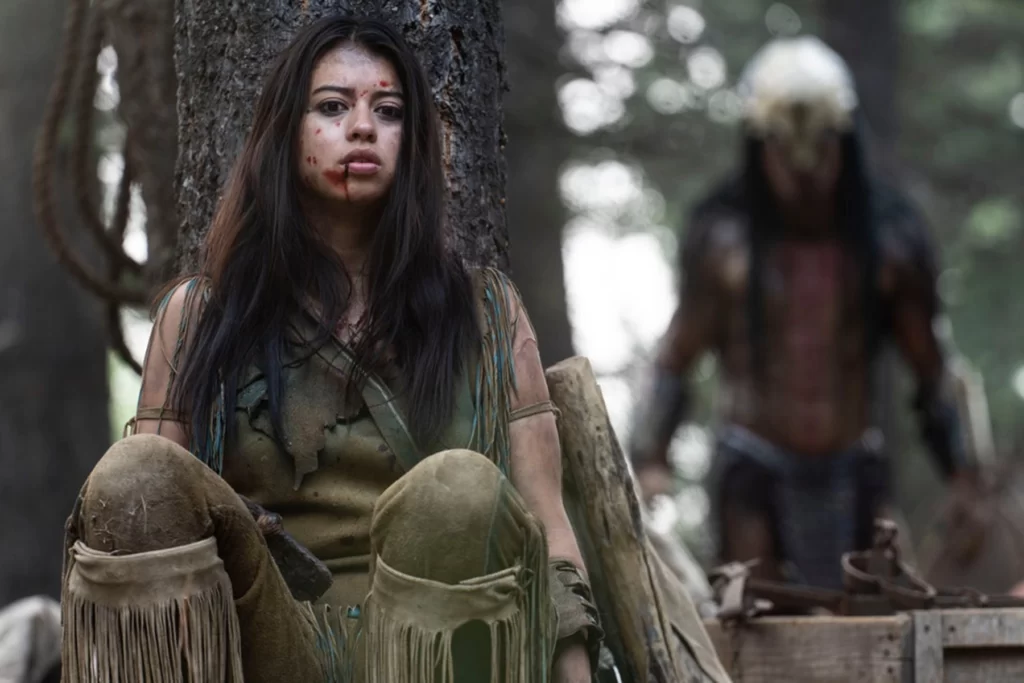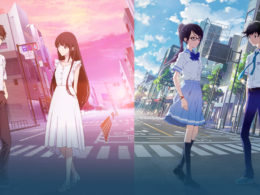2022 was an extraordinarily strong year for movies. Films such as Everything Everywhere All at Once, Top Gun: Maverick, and Avatar the Way of Water dominated the conversation for Best Picture—and rightfully so. However, one film that deserves to be in this conversation is Prey, directed by Dan Trachtenberg from 20th Century Studios. Set in the early 1700s, this next entry into the storied Predator franchise stars Amber Midthunder as Naru, and tells the story of a young female being hunted by a monster unknown to this young world.
Representing Indigenous culture, as well as a strong female lead, this film resonates with a vast amount of people through various communities, for a variety of important reasons. Its themes of perseverance and adaptation in the face of unfathomable danger have been displayed repeatedly across film history—but by incorporating key technical elements of cinematography, sound, and editing into its storytelling, Prey is one of the most powerful, and effective stories to date.
A vast hunt for ‘Prey’
The number one mission to drive home the themes of an action-horror film like Prey is to convey the suspense and fear felt by the characters across the screen. Throughout the horror genre, various filmmakers use differing methods to exhibit fear and suspense, but Prey utilizes the vast landscape of the film’s setting to enhance feelings of suspense and unease.

In the film’s opening minutes, Director of Photography Jeff Cutter uses a variety of wide shots featuring the near-endless forest and open fields across the Northern Great Planes where the film transpires. Alone, these shots might not generate an emotion of fear or unease, however the sound design creates a unique and immersive experience for viewers to witness.
Paired with the film’s diegetic nature sounds, these shots almost become a character in the film. Flowing rivers, cicada chirps, and ruffling leaves paired with wide landscapes generate the necessary feelings of isolation and discomfort that add to the cinematic experience by making the film’s main characters feel secluded from the larger world.
The origin of fear
The fantastic use of nature in cinematography only scratches the surface of this film’s elements of Mise-en-scène. The artist surrounding the set design, makeup, and costumes had to make sure that the product they created was not only presentable, but authentic to the period. To fully invest in the time-based themes and representation of Prey, the audience needs to be able to connect with the time and cultural aspects of the setting.
Naru’s costume is a notable example of this, displaying face paint and an outfit inspired by the Indigenous history of the period. Aspects of Mise-en-scène continue with the use of practical effects (with some special effects added in the editing stages of post-production). Prey’s use of both effects styles provides a raw, gruesome tone to the film, in addition to a greater sense of believability.

A scene that stands out is the wolf chasing a jack rabbit; ninety percent of the chase is performed by actual animals. However, seconds before the wolf catches the rabbit, the shot switches to VFX. This not only enhances the tension during the hunt, but protects the animals! The practical effects do not stop with the animals, however, as the Predator is also practical.
An actor inside the Predator suit makes the action scenes feel suffocating and visceral, and succeeds in furthering the narrative. Much of this film lacks dialogue, requiring the crew to craft extra effort into these moments of conflict and tension. In consequence, the editing and cinematography of these fights and expeditions must be sound and well-coordinated, as action sequences are the heart of this film.
Many fight scenes feature running and motion, which allows the director to work with long motion shots taken throughout the forest. The camera moving alongside Naru, or the Predator, launches the audience into the moment and encapsulates their attention. Further editing tactics include the use of shot-reverse-shot.
Usually used in moments of high emotion, such as fear, anger, or frustration, this method shows us how the characters react to key moments within the action. Keeping the viewers up-to-date on the characters’ evolving emotions is a key design that Prey uses to keep its audience engaged.

A tale of survival
Throughout Prey, the filmmakers use a multitude of various aspects of lighting, sound, editing, and shot types to keep the audience engaged. However, these crucial technical aspects of the film would be overlooked if accompanied by a sub-par story. Thankfully, Prey’s story may be its strongest asset.
The past few editions of the Predator franchise typically follow the same pattern that John McTiernan uses alongside Arnold Schwarzenegger in the 1987 original. With this film, 20th Century Studios decides to take a different approach and make a prequel. This allows Screenplay Writer Patrick Aison and Director Dan Trachtenberg the flexibility to tell the story they want, which turns out to be a wise choice, as this story may very well be the best of the franchise.
The idea that because Naru is a woman, she is incapable of hunting, allows the film to show the growth of not only Naru’s ability to hunt, but her ability to stand up and defend her honor among her peers. Furthermore, this film explores the interesting concept of a “Predator” that only hunts other “Predators.” By utilizing this notion, Naru can thrive in her role as “Prey,” adding additional layers of depth and growth to her character arc.
These two stories give the writing team a strategy that plays off the strengths of these themes, and delivers various gut punches and cheer-worthy moments in its shorter runtime of an hour and forty minutes.

The team behind Prey hits on every cylinder during production, and it caps off a brilliant display, demonstrating exactly why this film should not be overlooked as one of the best of the year. Between the additional use of hard and soft lighting, added effects of fog and suspense, and Midthunder’s encapsulating performance, there is much to unpack in subsequent viewings.
Prey is incredibly cohesive, depicting a brilliant story of defining who you are despite any preconceived notions. This is, perhaps, the reason this film not only resonates with me, but with an audience of millions of viewers around the globe.
If you enjoyed Prey, let us know on the Agents of Fandom socials, and make sure to check out Fandom Academy where you can fulfill all your pop culture needs!











